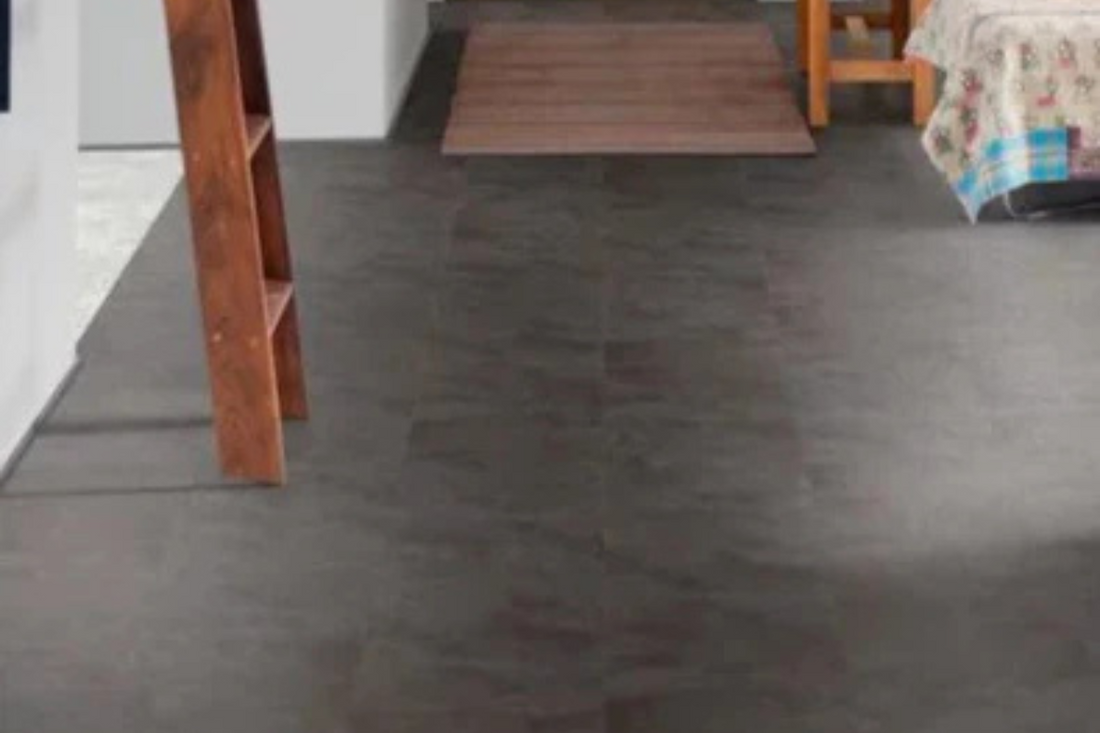
How Do You Match Luxury Vinyl Tiles For A Seamless Finish?
Share
For businesses, the appeal of luxury vinyl tiles is both aesthetic and practical in nature, but whilst the beauty of a stone-effect or wood-effect floor speaks for itself in a modern minimalist office, the true benefits of LVT lie beneath the surface.
Depending on whether you use loose-lay, click-lock or glue-down tiles, LVT products can be easily replaced, providing a beautiful restored finish for a tiny fraction of the cost of wall-to-wall carpeting or screed flooring, and with far less effort.
This, combined with their greater robustness in high traffic areas, makes LVT products remarkable value for money, but one important trick to learn to ensure that the tiles retain a seamless, professional finish is to understand how to effectively match existing tiles and avoid notable discrepancies.
For the most part, any LVT order will involve purchasing some excess tiles just in case there is a problem with installation, but if you are doing significant repairs and need to make another order, are setting up multiple areas or are making extensive renovations, here are some considerations when matching flooring tiles.
Type Of Tile
There are multiple different types of LVT products, but they tend to be categorised by installation form, and naturally, you cannot mix-and-match wildly different types as they will not fit together or will provide an inconsistent finish.
There are luxury vinyl tiles and luxury vinyl planks, which differ in terms of fundamental shape, and there are also click-lock, loose-lay and glue-down installation methods.
Loose lay is by far the simplest to install and replace, consisting of tiles with a rubber backing layer that provides enough friction once laid down to keep it in place with no adhesives or nails required.
By contrast, click-lock flooring slots together like a jigsaw, and glue-down uses either an adhesive backing layer or a separate glue to keep the tiles in position.
Each installation choice has various options as well as positives and negatives, but the key is that replacement tiles need to be compatible with each other in order to match properly.
Colour And Texture
Whilst it stands to reason that the new flooring tile should match the old one, there are a lot of subtle differences between colours, patterns, textures and shades, and it is essential that you try and match them as closely as you can.
This is mostly fine if you are using existing tiles, but if you are replacing, for example, a new set of wood-effect tiles, you need to ensure that the grain is of a similar size, direction, shade and tone.
Because the wood or stone effect is made using high-resolution photography, slight differences in colour temperature and ambience can be magnified if you are using mismatched pieces.
Textures can be even more variable, as different manufacturers will employ varying techniques in order to create the most realistic look possible.
The best way around this is to request samples where possible and compare them in situ in multiple lighting conditions. This will help you compare how they look compared to the existing tiles and find the best possible match.
Thickness
LVT products are made up of multiple layers, and whilst most tiles have a backing, design, film and wear layer, these layers can vary in composition and thickness.
This, in turn, can significantly affect consistency, and in order to get the best results and avoid an uneven finish, you should make sure that your LVT replacement tiles are the same size and thickness, with roughly the same composition of layers, in order to ensure they match.
Wear Layer
The secret to the longevity of LVT is the wear layer, the top-most coating that provides the most resistance from wear and tear, and one of the elements of the tile that can be the most difficult to match between brands and products.
It is important to check the specifications of your old LVT and any potential alternatives to check how thick and high-quality the wear layer is, as whilst the replacement may resemble the existing tiles at first, the differences will become very apparent as they wear.
If the replacement tiles have an especially thin wear layer, then the tiles will wear out faster and look different in a high-traffic situation.
Production Run
Depending on the production method, there can be slight variations between different batches, although quality control will typically endeavour to ensure that they are not too different.
This can mean that, for example, two batches of the same LVT product from the same manufacturer may vary slightly between production runs, and getting access to samples is key to averting a potential mismatch.
